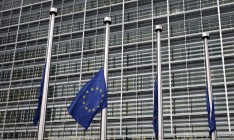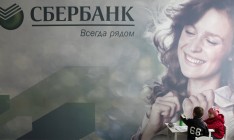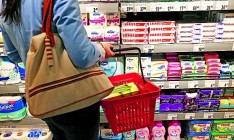Economy
tradeRussia responded with new sanctions to signing of the Association Agreement between Kyiv and the EU
Tripartite negotiations between the EU, Russia and Ukraine over the implementation of the Association Agreement (AA) between Ukraine and the EU took place in Brussels last Friday. Officials discussed potential risks of application of the AA to trade between the parties, said Ukrainian Foreign Minister Pavlo Klimkin in a conversation with journalists at the end of consultations. In their final joint statement negotiators stressed that the AA should bring benefits to all sides. However, in practice the trilateral meeting was not successful. On the same day, Moscow announced the introduction of trade restrictions, which, unlike previous ones, will not only affect trade between Ukraine and Russia directly, but will also affect commercial relations indirectly through the EU.
Split three ways
On the day of negotiations Rosselkhoznadzor (Russian Agro Monitoring Agency) reported that starting next Monday – July 21 – it would introduce a new, stricter procedure for the import of livestock products transiting through the EU. “Products subject to veterinary control manufactured by enterprises in third countries and in transit through the EU should be supplied only in vehicles or containers sealed in the exporting country (and the seal should not be opened in the EU). Cargo should be accompanied with original veterinary certificates of the country of origin of products,” noted the agency. Previously, such a measure was effective only for products in transit through Lithuania. Officially, it aims at the prevention of spreading of agents of contagious animal diseases and import of products of animal origin that do not comply with safety requirements.
However, in reality, the innovation of Rosselkhoznadzor is a logical continuation of Moscow’s tightening of conditions of the export of goods directly from Ukraine to Russia. It will limit the possibility of re-export of goods through the EU, especially those which are already difficult to deliver directly from Ukraine to Russia. So, in mid-June Rosselkhoznadzor reduced to two the number of checkpoints and temporary storage facilities for livestock products supplied directly from Ukraine. The agency explained that by the increasing incidences of identification of unacceptable levels of concentration of antibiotics, especially in dairy products, as well as the wish to counteract smuggling of meat products. Then on June 30 Rosselkhoznadzor started demanding additional documents for the import of Ukrainian products containing raw materials of animal origin. And on July 4 the Rospotrebnadzor introduced a ban on the supply of milk and dairy products manufactured by seven enterprises of Milkiland-Ukraine, in addition to a similar embargo on imports of products of several enterprises of Milk Alliance and Almira, effective from April.
In general, for Ukraine’s economy such sanctions will not create any significant problems – the share of animal products in Ukrainian exports to Russia in 2013 amounted only to 3.7%. But for domestic companies making such products a comprehensive blocking of access to the Russian market will be painful. Last year, Russia accounted for 93% of the total Ukrainian exports of pork, 87% of cheeses, 74% of cattle meat, 74% of butter, 31% of poultry meat.
Face to face
Restrictions on Ukrainian exports and re-exports of Ukrainian products through the EU to Russia may eventually apply not only to animal products. On July 1 the head of Rospotrebnadzor and Russia’s Chief Sanitary Inspector Anna Popova said that the Russian sanitary service had new claims to the quality of Ukrainian products entering its market. “We noticed deterioration of the quality of a number of products and must admit that we have registered an increased number of negative findings in cheeses, dairy products and canned vegetables,” she said. Also, Rospotrebnadzor pays special attention to fat and oil products, confectionery, juices and alcoholic beverages, fish products and sausages.
Besides the use of non-tariff barriers, Moscow also threatens Ukraine with higher import duties for Ukrainian exports, which are currently subject to a 0% duty under the terms of preferential treatment of the free trade zone (FTZ) in the CIS. The Agreement on the FTA in the CIS allows introducing non-zero rates of duties inside the FTA for those member states which signed FTA agreements with other countries. Such a mechanism can be used if the FTA of a member country (Ukraine) with a third country (EU) leads to a substantial increase in imports through the “intersection” of free trade zones in the CIS. On Friday, Russian Minister of Economic Development Alexei Ulyukayev did not fail to remind Kyiv about such a possibility.
For now there is no point to expect that Moscow will slow down the introduction of sanctions against Ukraine. The second round of tripartite consultations on the AA, which could ensure some progress in this direction, is scheduled for September 12. However, negotiations even in two months are the fastest alternative for solution of the trade conflict with Russia at Kyiv’s disposal.
Capital previously mentioned that Kyiv could challenge the sanctions through the World Trade Organization, as Russia, Ukraine and the EU are its members. “Ukraine can file a complaint on application of non-tariff restrictions on the part of Russia with the Dispute Settlement Body (DSB) at the WTO,” said Director of the Blazer Foundation Oleh Ustenko. However, the process of resolution of the conflict with involvement of the DSB as an arbitrator may take up to six years, including an appeal. Ukraine would need another year and two months to challenge the increase in duties within the framework of the FTA in the CIS.







 of the agreement of syndication with Financial Times Limited are strictly prohibited. Use of materials which refers to France-Presse, Reuters, Interfax-Ukraine, Ukrainian News, UNIAN agencies is strictly prohibited. Materials marked
of the agreement of syndication with Financial Times Limited are strictly prohibited. Use of materials which refers to France-Presse, Reuters, Interfax-Ukraine, Ukrainian News, UNIAN agencies is strictly prohibited. Materials marked  are published as advertisements.
are published as advertisements.